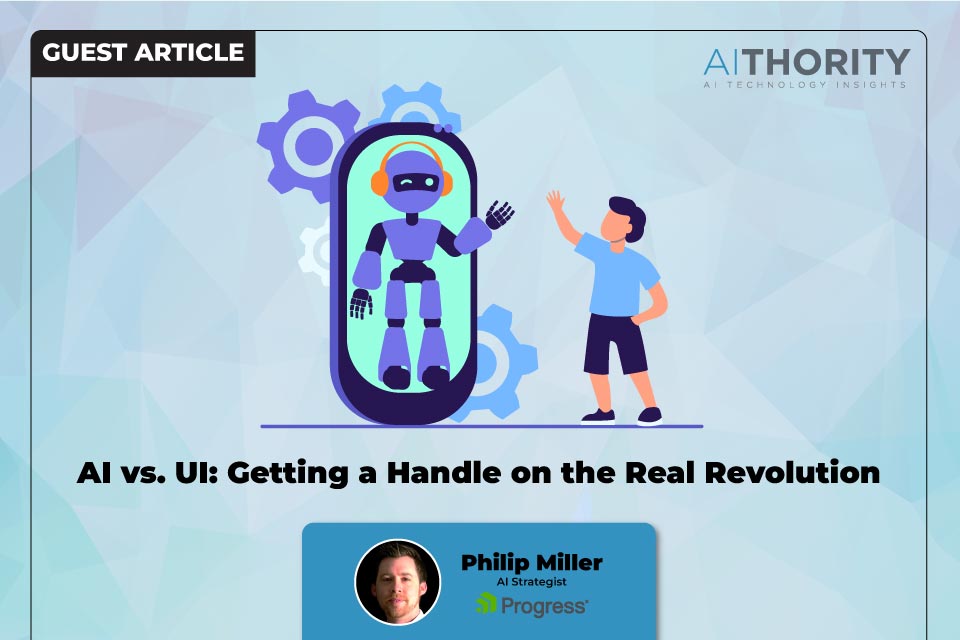Over the previous few years, the time period “AI Revolution” has been utilized in so many contexts. The listing of issues AI is about to revolutionize is lengthy and rising longer: healthcare, office productiveness, private leisure, relationship, schooling, transportation, the listing goes on.
This isn’t essentially inaccurate. All of these issues listed above actually are within the strategy of being revolutionized. The important thing distinction is within the terminology. “AI,” as a time period, is simply too all-encompassing. In its lack of precision, it fails to seize the character of the modifications which might be occurring proper now. Actually, one might argue that the revolution proper now may be extra precisely labeled a UI/UX revolution—a revolution within the methods customers work together with AI know-how.
Additionally Learn: Balancing Velocity and Security When Implementing a New AI Service
AI is Not “New”
Given the uptick in media protection, it’s very believable for a layperson to assume AI was invented two years in the past, concurrently with the launch of ChatGPT. After all, that isn’t the case: variations of right now’s AI/ML know-how have been in use for many years. To quote only one outstanding instance, Netflix’s advice engine has been powered by machine studying since no less than 2006. Netflix notes what viewers loved after which serves up extra content material prefer it.
This similar logic has powered social media feeds for a decade-plus and its chief high quality is its invisibility: that is know-how that operates behind the scenes, enhancing the person expertise with out drawing consideration to itself. Past advice engines, customers can see this performance at play in such providers as spam filtering and monetary fraud detection. AI thus far has been outlined by the diploma to which customers don’t discover it.
AI within the Highlight
What distinguishes this newest AI epoch is the diploma to which AI is noticeable: as an alternative of a hidden entity working its magic from the margins, it’s emerged because the star of the present.
ChatGPT is, after all, the go-to instance right here. In a comparatively brief time period, ChatGPT has embedded itself within the working routines of hundreds of thousands of individuals throughout the globe. However—feeling the AI strain—established corporations like Alphabet, Meta and X have additionally begun to strongly encourage prospects to work together with their rising AI applied sciences. On Instagram, as an example, customers can now make surreal alterations to their pictures utilizing AI or lose hours enjoying round with Meta AI’s chatbots.
Options like these had been as soon as the unique terrain of specialists—individuals who know their manner round huge datasets. That has modified and these capabilities now belong to everybody, no matter technical ability degree.
The UI/UX Revolution
Many contemplate the final paradigm shift as notable because the “AI Revolution” was the invention of the web itself. The framework for what would turn out to be the trendy shopper web was pretty well-established by the Nineteen Eighties. However it was ineffective for most individuals as a result of they didn’t have the means to entry it.
As with the web, so too with AI: the true revolution right here has to do with person interface (UI) and person expertise (UX). Sure, the algorithms have gotten higher—however as crucially, they’re being surfaced to the person in new, novel and extra interactive methods.
Take a look at voice assistants, as an example. The know-how underlying modern voice assistants like Siri and Alexa—pure studying processing, voice recognition, machine studying—has existed for a very long time. However these disparate technological improvements, nonetheless spectacular, merely didn’t matter to the common shopper, who had no option to entry them. It was solely after they had been introduced collectively into an inexpensive, enjoyable, user-friendly bundle that the true revolution might start.
Why UI/UX Issues
There’s a severe lesson right here, one which practitioners and builders could be clever to take to coronary heart. They’ll construct a strong AI device—but when that device isn’t usable, it should by no means obtain liftoff. The interface isn’t an afterthought—one thing to fret about as soon as the true work of inventing the know-how is completed. In a really actual sense, it is the work, and can dictate the best way it’s skilled on the planet. Extremely-powerful know-how with subpar UI/UX is sort of a gorgeously tailor-made shirt with no arm holes: good to have a look at however functionally ineffective.
Additionally Learn: The Guarantees, Pitfalls & Personalization of AI in Healthcare
Consumer-friendly AI fosters belief—an more and more essential factor presently of excessive shopper skepticism. Clear design can go a great distance in direction of dispelling a few of the considerations that also exist round this know-how amongst on a regular basis customers. Interactive dashboards, real-time analytics and customizable options empower customers and assist builders keep away from a few of the errors of the previous few many years.
This could be a difficult balancing act. Builders are in search of a candy spot between too-complex and too-simplistic. In right now’s tech tradition, one can err on the facet of slight complexity—shoppers are extra savvy and adaptable than sometimes supposed. That is particularly the case on the subject of knowledge safety, about which shoppers are better-informed than at any level within the web’s historical past. Builders completely have a accountability to assist customers perceive what knowledge is being collected and the way it’s getting used.
Undoubtedly, the traces between AI and UI/UX are blurring and can proceed to blur. Over the subsequent few years, the merchandise that take advantage of vital impression would be the ones that may seamlessly mix superior know-how with intuitive design—opening up a world of potentialities for on a regular basis customers and using the potential of this new know-how to the fullest.
[To share your insights with us as part of editorial or sponsored content, please write to psen@itechseries.com]

